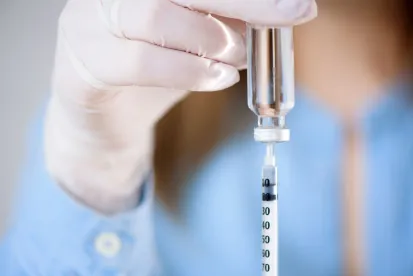On October 1, 2021, the United States Department of Health and Human Services (“HHS”) rescinded the final rule entitled “Implementation of Executive Order on Access to Affordable Life-Saving Medications.”[1] The rule required FQHCs and other recipients of grant funding under Section 330(e) of the Public Health Services Act (collectively “health centers”) a) to make insulin and injectable epinephrine available to eligible patients[2] at or below the price paid by a health center through the 340B Drug Pricing Program and b) to establish practices for assessing patient eligibility.[3] All future 330(e) grant funding was conditioned on compliance.[4] Although the rule intended to help Americans afford vital medications, HHS determined that the rule ultimately would have harmed health centers and, consequently, the patients they serve.[5]
Specifically, HHS examined the excessive administrative burdens and costs[6] placed on health centers to track patients’ eligibility in real-time.[7] Delays in medical billing and claims processing, as well as cost-sharing requirements for different insurance plans, created administrative challenges for assessing eligibility.[8] Health centers also would need to construct and maintain two separate eligibility assessment systems: one for the sliding scale discount schedules required under 42 CFR § 51c.303(f)[9] and one for the applicable medications under the rule.[10] These new administrative burdens were likely to result in the diversion of resources from needed patient care, particularly during the COVID-19 pandemic, to covering administrative costs.[11]
Given the health centers’ continuing role “in ensuring equitable access to COVID-19 vaccination and … [providing] primary and preventive care … [to] hard-to-reach and disproportionately affected populations,[12]” HHS concluded that rescission prevented unnecessary costs to health centers and subsequent reductions in resources available to provide care to millions of Americans.[13] The executive order from which this rule originated remains in effect, however, and HHS is exploring “alternative approaches”[14] and “non-regulatory options”[15] to address the high costs of prescription medications. It remains unclear what those approaches will be.
FOOTNOTES
[1] See 86 FR 54390.
[2] While Executive Order 13937 stated “individuals” with low incomes would be eligible, HHS limited individuals to health center “patients” in the final rule. In its definition of “patients,” HHS excluded individuals whose only health care service received from the health center was the dispensation of medication(s) for subsequent self-administration or home administration. See 85 FR 45755; 85 FR 60749.
[3] Eligible patients would be those individuals “with low incomes, as determined by the Secretary, who have a high cost sharing requirement for either insulin or injectable epinephrine; have a high unmet deductible; or have no health insurance.” See 86 FR 54390.
[4] See 86 FR 54390.
[5] See 86 FR 54391, 54393-54394.
[6] See 86 FR 54390.
[7] See 86 FR 54391.
[8] See Id.
[9] Sliding scale discounts are provided to eligible individuals and families with annual incomes at or below 200 percent of the Federal Poverty Guidelines. See 42 CFR § 51c.303; see also 86 FR 54391.
[10] Eligible patients would be those individuals or families with annual incomes at or below 350% of the Federal Poverty Guidelines. See 86 FR 54391.
[11] See Id.
[12] See 86 FR 54390.
[13] See 86 FR 54391, 54393.
[14] See 86 FR 54393.
[15] See 86 FR 54390.




 />i
/>i

